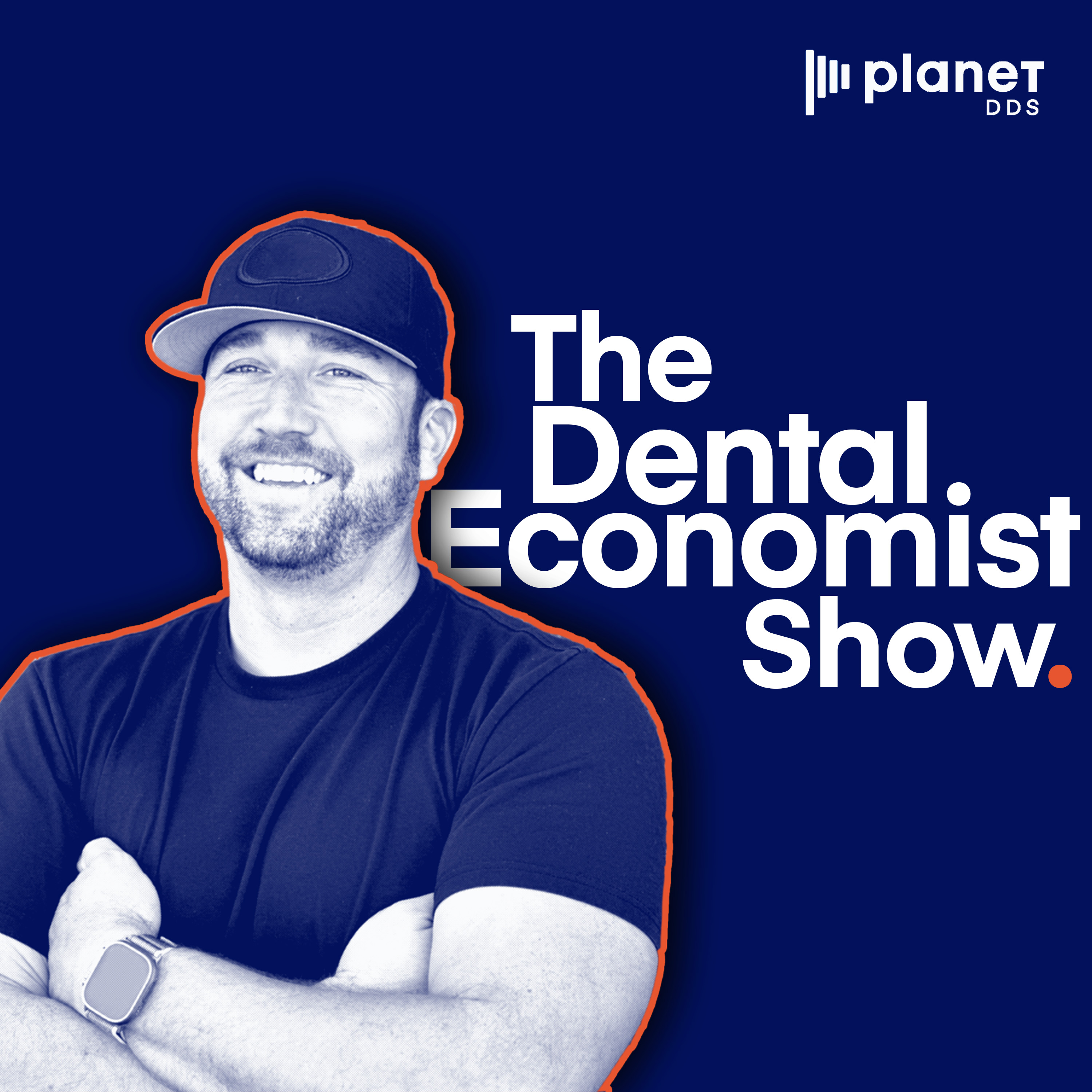Elliot Zibel on How Data Can Retain 96% Of Your Doctors
May 8, 2025

Are the quality care metrics of dentistry being used the way they should? Surprisingly (or unsurprisingly), not. In this episode of The Dental Economist Show, host Mike Huffaker sits down with Elliot Ziebel, Founder of ClariFi Health to explore how data-driven decision-making is transforming dental group operations. From leveraging AI for practice analytics to implementing strategic quality metrics in hygiene departments, they unpack practical strategies for driving predictable growth.
Profit and purpose don’t need to be mutually exclusive; this conversation offers insight into the strategies that allow them to coexist, and practices to thrive.
Are the quality care metrics of dentistry being used the way they should? Surprisingly (or unsurprisingly), not. In this episode of The Dental Economist Show, host Mike Huffaker sits down with Elliot Ziebel, founder of ClariFi Health to explore how data-driven decision-making is transforming dental group operation - from leveraging AI for practice analytics to implementing strategic quality metrics in hygiene departments.
What You’ll Learn:
- How to use data analytics to identify and prioritize revenue opportunities in your dental practice
- Why provider retention is the key metric for sustainable practice growth
- How to double practice EBITDA through improved patient care standards
- The importance of implementing data-driven change management
- Why standardizing diagnostic protocols directly impacts practice profitability
- How AI is transforming dental practice operations, from revenue cycle management to treatment planning
- How to balance technology implementation with maintaining strong provider relationships and culture
Tune in for actionable insights on the critical intersection between quality patient care and increased practice profitability, driven by data.
Episode Highlights:
[06:04 - 9:49] A Retention-First Approach Changes Everything
Elliot reveals that there's a 98% correlation between doctor retention and same-store revenue/EBITDA growth in dental practices. He found that focusing on creating a collaborative environment where providers could grow professionally while maintaining ownership stakes, led to 96% doctor retention, which cascaded into 90% hygienist retention and 92% patient retention. This retention-first approach eliminated the need for heavy marketing spend since patient retention became their primary growth driver.
[14:34 - 29:13] The Value of Data-Driven Hygiene Standards
Elliot shares how measuring and improving hygiene standards can dramatically impact practice profitability, noting that while 50% of Americans over 30 have periodontal disease, most practices only have 15-20% of adult patients in perio programs due to inconsistent probing and diagnosis. By implementing clear standards around FMX frequency, perio probing, and fluoride application, practices can identify millions in untapped revenue. The key is using data to track these metrics at both the provider and practice level.
[29:14 - 39:54] Using Prioritization to Get Useful Data
Instead of overwhelming teams with countless metrics, Elliot recommends focusing on just 1-3 key initiatives at a time. His company's initiative tracker forces prioritization by limiting projects and requiring clear ownership, goals, and timelines. They evaluate opportunities based on effort versus EBITDA impact to identify quick wins that build momentum. This focused approach prevents analysis paralysis and drives actual behavior change.
[50:13 - 55:27] The AI-Enabled Future of Dental Operations
Elliot explains how AI and automation are transforming dental practice operations beyond just clinical applications. He sees opportunities to automate routine tasks in revenue cycle management, finance, HR, and treatment planning follow-up. The key is identifying processes that can be standardized and automated while maintaining quality care standards. For forward-thinking practice leaders, this suggests focusing first on automating administrative workflows to free up staff time for patient care. Understanding and experimenting with AI capabilities will be crucial for practices looking to gain operational efficiency.
Love dental business insights? Share this episode and subscribe for more!
Want to be a guest on The Dental Economist Show?
If you’re a growth-focused leader in the dental business world or someone shaping its future through technology, consulting, or innovation—we want to hear from you.
Submit your interest here: https://forms.gle/BjAmyYLsFgNJBf8f8
Whether you’re leading a DSO, building the next big dental SaaS tool, or redefining patient experience, this show is where the smartest minds in dental business come to talk strategy!
The Dental Economist Show with Mike Huffaker is handcrafted by our friends over at: fame.so